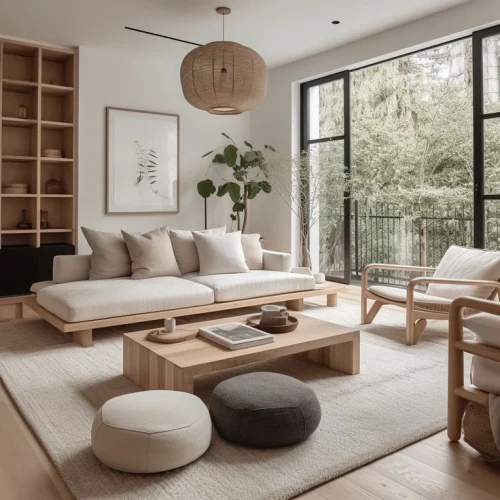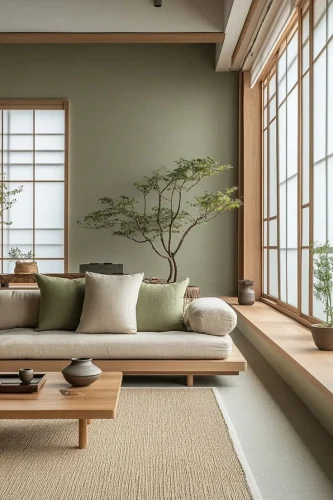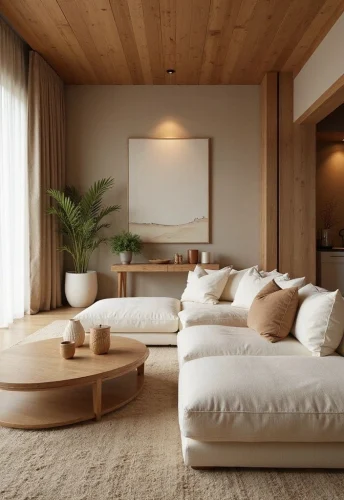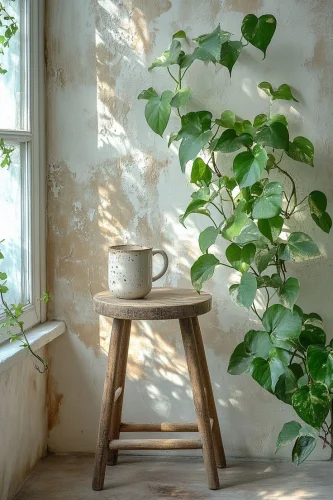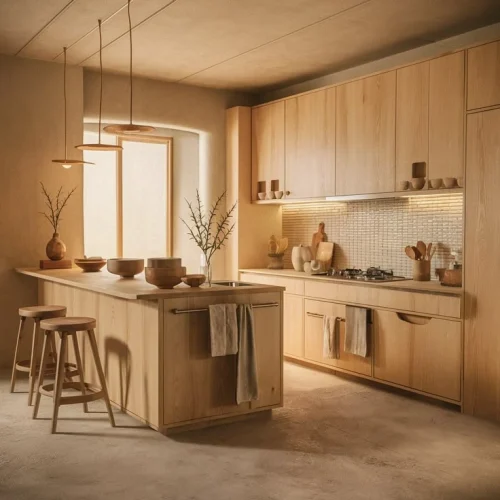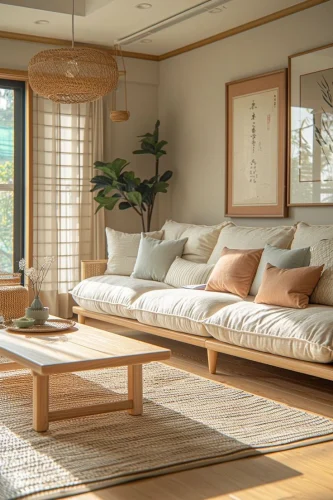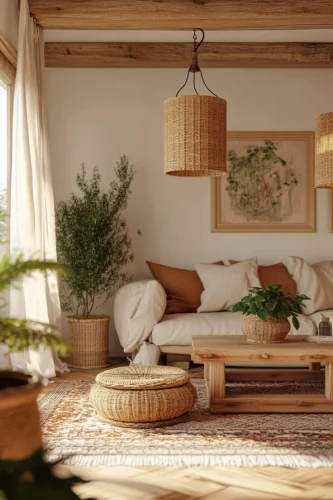
Why Laminated Security Glass Is the Best Choice for Home & Office Security
July 23, 2025
What Is Interior Design and Why Is It Important?
July 23, 2025If you have been browsing for home inspiration lately, chances are you have come across the word ‘Japandi’. But what is it?
Japandi is a mix of two styles- Japanese (minimalism) and Scandinavian (warmth). No wonder the calm, clutter-free, and cosy Japandi design style features grabbed your attention.
Japandi style first got noticed around 2017, when people around the world began rethinking how their homes should feel. With the advent of Covid-19, it became very popular because the Japandi design style features offered exactly what most of us were craving- peace, lightness, and breathing space.
Also read: 15+ decorative ideas for your rental home!
Best Japandi Design Style Features
Japandi interior design is slowly making its way into our Indian homes. Let’s explore its features that make it so special and how you use them in your own space.
What are the characteristics of Japandi style?
|
1. Clutter-free space
What makes Japandi design style special is its simplicity. But let’s be honest; when we hear the word minimalism, we imagine the rooms to be cold and empty, without any soul or character of their own. But that’s not what Japandi preaches.
Here, minimalism is all about removing anything that doesn’t serve a purpose, and keeping only what you truly use or value. It’s not about stripping your space bare. The intention is to make your room feel light, airy and peaceful.
Minimalist home design ideas for your home:
- Clear visible clutter, like the extra showpieces, plastic storage bins, heavy, draining photo frames (go for simple photo frames), tangled visible cables, overwhelming decor, etc.
- Let the corners breathe. Instead of dumping everything into one space, just leave with one lamp, one book and a plant. Here are some easy choices for plants- money plant, rubber plant, snake plant, etc.
- Invest in multi-purpose furniture, like a bench that also works as storage or a stool that doubles as a side table.
2. Neutral colours
If you see any Japandi interior design, there won’t be overwhelming colours at all. It uses only calm, neutral colours. And when we say neutral, it’s not always beige and boring. There are so many soft, grounded colours that work well together and do not overpower the room.
Japandi’s neutral color palette for interiors:
- Off-white
- Ivory
- Warm grey
- Beige or oatmeal
- Terracotta
- Sage green
- Charcoal
What can you do?
- If your walls are already painted, try adding Japandi tones through curtains, bedding or furniture covers.
- Do not go for multicolour finishes. Choose soft, matte fabrics, like cotton, linen or muslin.
- If your furniture is dark in colour, tone it down with lighter colour cushions, a pale rug, or sheer drapes.
3. Natural Materials
Another convincing feature for you to choose Japandi style home interiors is the usage of natural materials. They create warmth in the room and remind you of nature.
Japandi materials to include:
- Wood
- Linen/Cotton
- Rattan/Cane
- Bamboo/Jute
- Ceramics
- Stone
- Clay/Terracotta
What can you do?
- You can replace plastic containers or synthetic trays with bamboo or ceramic ones.
- Add a jute rug by the entrance, or a rattan chair by the balcony.
- Buy local raw wood or matte polished furniture, instead of shiny laminate furniture.
- Use handwoven baskets made of cane or fabric to store everyday items in style.
Also read: 9 ways to keep your homes cool like traditional Rajasthani homes.
4. Low, clean-lined furniture
Have you noticed how bulky your room feels because of tall, chunky furniture?
In Japan and Scandinavia, most furniture sits low. You will find platform beds, floor-hugging couches, short-legged tables, low-seating chairs, etc. These features make the room feel more open and anchored, reduce visual clutter, and draw the eye horizontally rather than vertically.
If you want to incorporate low, clean-lined furniture in your home, even a basic wooden charpoy with a linen mattress works amazingly. Instead of tall cabinets, use floating shelves or sideboards under 3 feet.
5. Imperfection
This is the most important, heartwarming feature of all. Japandi design welcomes flaws.
From the Japanese concept of Wabi-Sabi, Japandi reminds you that not everything has to be perfect to be beautiful. A clay cup with a slight dent, a handmade rug with uneven edges, a wooden table that shows knots and grains- all are welcome.
Starting to accept imperfections matters because it saves you from being obsessed with everything being perfect. It makes you feel at home instead of like you are living in a catalogue. Overall, it adds personality and soul to your home.
6. Functional items
Each and every thing in a Japandi house is functional, and there’s no room for decor that just collects dust.
For example,
- a handmade ceramic bowl for fruits
- a tray for keys and mail that also works as a decorative piece
- a step stool that’s also a plant stand
- wall hooks for bags or clothes that double as design elements
Japandi Interior Design India
If you are wondering if you can bring Japandi design style features to your Indian home, you can! You don’t need imported furniture or fancy decor. It works amazingly with just smart local tweaks.
Try,
- Local teak or mango wood with a matte finish
- Cotton or khadi for curtains and covers
- Light terracotta or Kota stone floors instead of shiny tiles
- Light cotton curtains that let in natural light
- Handloom throws or clay lamps as simple touches
Also read: Best tips to enhance natural lighting at home.
Final Thoughts
Times have shifted, and people now are into minimalism and sustainability, calm colours, and clutter-free spaces that feel easy to live in.
If you are trying to create a clean, quiet and easy-to-maintain home, you should consider GreenFortune’s uPVC windows and doors for your home. Unlike old wooden or metal options, the uPVC frames do not need painting, polishing, or any extra maintenance.
They are eco-friendly, weather-resistant, thermally insulated, block outside noise and heat out, look stylish and require very little maintenance.
FAQs
1). Why is Japandi so popular?
Japandi design style features are so popular and loved by many because they keep the home simple and neat without feeling dull. Japandi mixes Japanese style with the cosy feel of Scandinavian homes. Even small rooms look bigger and feel peaceful.
2). What are the benefits of Japandi style?
The major benefits of Japandi style homes are less mess and easy cleaning. Light colours make rooms feel fresh, hidden storage hides daily clutter, and natural things like wood, cotton, jute, rattan, etc., make the home feel warm and not too plain.
3). What are the colours used in Japandi style?
Japandi uses soft colours like warm white, off-white, light grey, and pale brown. Some people also go for colours like faded green and clay shades. These colours go well with wood, cane, or simple cotton things.








